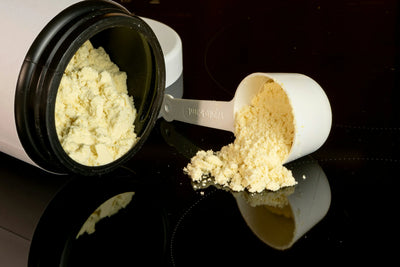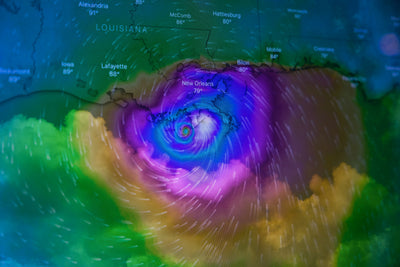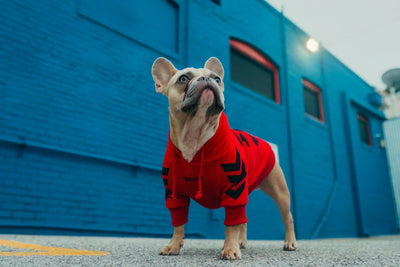Introduction
The lights in the emergency room were bleak and cold. When Sam - an otherwise lively golden retriever - was carried into the clinic by his terrified owner, his limbs were stiff and twitching, he was foaming at the mouth, and his eyes were unable to focus. The shrill alarm of the vital signs monitor became a sharp blade that tore at the serenity. Sobbing, his owner admitted that Sam's epilepsy had been so well controlled over the past year that she had stopped taking his daily dose of Clonazepam without authorization because she thought he was “fine”, and disaster struck.
Clonazepam for Dogs: Texas ER Vets' Dosage Charts by Weight & DEADLY Mistakes
Clonazepam, or “Klonopin” as it is known, is no ordinary “tranquilizer”. It acts as a “stabilizer” in the canine nervous system, precisely regulating the center's overdrive. By precisely increasing the efficiency of the neurotransmitter GABA (gamma-aminobutyric acid), it effectively inhibits excessive brain discharges. It's this mechanism that makes it such an important weapon in a veterinarian's arsenal against dog seizure storms, such as severe anxiety disorders, persistent epileptic seizures, and painful muscle spasms. However, while the weapon is a powerful one, it is highly susceptible to self-inflicted injuries when used inappropriately.

As the award-winning Animal Emergency Medicine Specialists of Texas point out - every milligram of Clonazepam needs to be accurately weighed. For a Chihuahua weighing less than 6 kilograms, 0.3 milligrams of Clonazepam may soothe a terrified gasp; but for a 35-kilogram Labrador, it may take as much as 7 milligrams to calm a sudden storm of convulsions. Dosage, along with size, is the central code for Clonazepam's effectiveness:
- Small dogs (<10kg): 0.1 - 0.5 mg/kg
- Medium dogs (10 - 25kg): 0.2 - 0.5 mg/kg
- Large breed (>25kg): 0.2 - 0.5 mg/kg
The Texas Veterinary Team emphasizes even more in their practice, “Don't get carried away with numbers on paper! Starting doses often begin at the lower end of the range.” A small, 6-kg dog might initially need as little as 0.6 mg (instead of the upper limit of 3 mg), divided into two doses a day. It is only when treating intractable epilepsy that the dosage may be gradually and cautiously increased to 0.5-1 mg/kg. each fine-tuning requires the owner to act as a meticulous observer, closely recording changes in the dog's response and providing detailed feedback to the doctor.
However, any oversight can be a shortcut to the abyss:
The hubris of “dosing up” or “dosing down”: When Lily's anxiety escalated after the move, her owner doubled the dosage of her medication out of the good intention of “comforting” her. Within a few hours, the dog, who had been curled up in a corner, was breathing weakly and could not be roused. Dose deviations are never caring, but a dangerous gamble. Every pill count needs to be performed with painstaking precision, always trusting your veterinarian's measurement boundaries-they guard the boundaries of life's experience.
THE DANGEROUS DANCE OF MEDICATION MIXING: In a common canine skin fungal infection, the owner gave the pug, who was on Clonazepam, ketoconazole ointment at the same time. A few days later the dog fell into a deep coma of respiratory depression. The owner had overlooked the power of drug interactions: certain antifungals, antibiotics, and even common antacids can exacerbate the hypnotic effects of clonazepam or alter its metabolic pathways. Make a list of all the medications your dog is taking (even if you don't think it's important) and keep it in front of your veterinarian's eyes before administering them.
Catastrophe Triggers for Suddenly Shouting Off a Medication: As in the case of Sam in the opening story, abruptly withdrawing a medication without a transition is like suddenly removing a life-supporting wedge of wood. In a body that has gone through a long cycle of medication, the nerves of the brain have grown to depend on Clonazepam to maintain the balance of electrical signals. Sudden withdrawal triggers a violent backlash: a storm of increased anxiety, inexplicable muscle tremors, and a relentless onslaught of more severe seizures. If withdrawal is necessary, the process must be slow and controlled, tapering off over weeks or even months under close veterinary escort.
Ignoring the presence of internal reefs: The liver and kidneys are the key pathways for removing clonazepam toxins from the body. In dogs with kidney or liver disease, medication is like traveling through a sea of reefs - a buildup that the medication can't remove, eventually leading to toxicity. An elderly Golden that was intended to relieve muscle spasms sank into an unrecoverable coma after taking the drug for undetected kidney deterioration. Before using Clonazepam, it is important to blood test the effectiveness of these “filtration plants”. It is also important to be informed in advance of any medical conditions such as glaucoma.
The fatal temptation of the home medicine cabinet: The seemingly innocuous scene of “human pills lying around on the coffee table” can bring instant tragedy. Owners' antihypertensive pills and antidepressants are highly toxic to dogs and often require costly gastric lavage if accidentally ingested. Dog-owning families must have an ironclad rule - all bottles of medication (whether veterinary or human) are tightly sealed and kept out of reach of the dog's paws.
While Clonazepam is on the right track, there needs to be constant vigilance for potential navigational markers as well:
Sensitive to side effects: from wobbly walks, inaccurate movements, excessive salivation, to mild discomfort such as paradoxical hyperactivity; red flags such as respiratory distress, prolonged vomiting, or confusion must be rescued by a veterinarian immediately.
Regular health assessments: Regular liver and kidney function tests and blood pressure monitoring are key to maintaining long-term medication safety. You can't expect to be safe just because you don't see anything wrong.
Guard the environment: Hot windowsills in direct sunlight can quickly eat away at the effectiveness of Clonazepam, and keeping it in a cool, dry place protected from light is a promise that every pill will survive.
After that emergency visit, Sam struggled to catch his breath in an oxygen chamber. His seizures were eventually re-tamed through a re-stepped medication program. The Texas emergency physician's voice was full of power: Clonazepam is indeed the light that dispels a dog's pain, but it also lurks in a haunting shadow zone. The owner's decision-making power is the last guardian dam: every pill must be precisely calculated by the power of responsibility and knowledge; every medication adjustment must strictly adhere to the scale set by the veterinarian.
Those who love their four-legged family members dearly, always remember when faced with a choice - blindness and fearlessness are only separated by a thin layer of paper, and behind that paper is the life of the dog you cherish.
Dog Ate Lorazepam? EMERGENCY Protocol for Tremors/Coma + When to Avoid Clonazepam
At 3 a.m., the door to the emergency room was slammed open. A corgi named “Xiao Bei” was held tightly in his owner's arms, his limbs as limp as a muppet, his breathing so weak it was almost imperceptible. The owner's voice trembled as he said, “He...he took out the lorazepam bottle from my nightstand...” The clock on the wall ticked, and every second felt like a hammer hitting the veterinarian's heart. This was no ordinary misadventure - lorazepam, a potent sedative used by humans to combat anxiety storms, can be a sharp blade that pierces right through the nerve center for dogs.
Lorazepam belongs to the benzodiazepine family of drugs and is sometimes used discreetly in veterinary medicine to control extreme anxiety or persistent epilepsy. It forcibly inhibits overactive neurons by intensifying the braking effect of GABA (gamma-aminobutyric acid) in the brain. However, when an undosed dog swallows an entire tablet, the “neural brakes” are instantly applied - paralyzing the respiratory centers, disrupting the heartbeat, dropping the body temperature, and eventually falling into a coma.
Life and death! Emergency protocols you must activate immediately:
Call for your life: Don't search the Internet! Don't wait for symptoms! Immediately grab the phone and call an emergency veterinarian or pet poison hotline (e.g., Pet Poison Helpline: 855-764-7661). Clearly yell out key information, “Lorazepam! Dose per tablet? Number of tablets missing? Time of misuse!” --These numbers are the doctor's life code for calculating the depth of poisoning.
Stopping the “local” method of inducing vomiting! Moments after seeing Bev unconscious, the owner tried to induce vomiting by pouring soapy water - a fatal mistake! Lorazepam quickly relaxes the throat muscles, and inducing vomiting can lead to asphyxiation or chemical pneumonitis. It is absolutely forbidden to induce vomiting at home unless the veterinarian has given clear instructions over the phone!
Battle for life in the emergency room: When Bev is admitted to the emergency room, the veterinary team works like a precision instrument:
Reversal in the golden 2 hours: If the accidental ingestion occurs within 2-6 hours and the dog is not yet unconscious, the doctor will inject a specialized emetic, apomorphine, to forcibly empty the stomach of the poison.

Gastric lavage storm: For unconscious patients like Bev, doctors will insert a gastric lavage tube and repeatedly flush the stomach lining with warm salt water, racing against the toxins with each round of rinsing.
Black guardian of activated charcoal: After gastric lavage, the nurse pours a paste of activated charcoal (dosage: 1-2 grams per kilogram of body weight) through a thin tube into the intestines - the microscopic charcoal acts as a magnet for billions of toxins and prevents them from entering the bloodstream.
Intravenous Lifeline: A steady stream of fluids from the IV stand flushes the kidneys, accelerating the metabolism of the drug; at the same time, blood oxygen and cardiac waveforms are closely monitored, ready for respiratory support at any time.
Antidote: When Bev showed signs of apnea, the doctor decisively injected Flumazenil, a benzodiazepine antidote that reverses the effects of the drug like a key in a lock, pulling the dog back from the brink of death.
These are the mistakes that are pushing dogs to the brink of death every second:
The fatal “half a tablet should do the trick” illusion: An owner once gave an anxious teddy a 1/4 tablet of lorazepam to “try”, and two hours later the dog slipped into a hypothermic coma. The difference in drug metabolism between humans and canines is like a cataclysmic divide - your “tiny amount” may be its lethal amount!
“It'll be fine when it vomits": After the chenari ‘DouDou’ accidentally ingested pills, the owner observed for three hours ‘to see if it would vomit on its own’, and the pupils were dilated when he was taken to the hospital. Lorazepam poisoning progresses at lightning speed, and a delay in seeking medical attention is tantamount to signing a death reprieve.
Numbness to danger signs: When a dog walks like a drunk, has uncontrolled muscle tremors, or is paradoxically extremely hyperactive - this is a red alert for neurotoxicity! If it progresses to respiratory distress, a temperature dropping below 35°C or coma, the chances of survival fall off a cliff.
Prevention is always kinder than rescue:
Fortification of medication: Lock bottles of medication in a combination locker up high; avoid storing medication in “dog's jumping zones” such as bedside tables, coffee tables, etc.; when pills are dropped, they must be picked up as if they were diamonds.
Environmental de-mining: weekly sweeping of couch crevices and under carpets for possible pill crumbs; use of tumble-proof trash cans with snap-on lids; and wrapping of tape around bottles to prevent licking of residue before discarding.

“Spit it out!” The “spit it out!” command: Positive reinforcement training (e.g., exchanging a toy for a dangerous object and rewarding it with a treat) creates a conditioned reflex to “let go of the mouth for a treat. The Golden Retriever “Big Bear” escaped death by spitting out a pill on command when he mistakenly swallowed it because of this training.
When Bev opened her eyes in the oxygen chamber, her owner knelt by the cage and sobbed uncontrollably. Behind every case of lorazepam poisoning is almost always preventable human negligence,” the emergency physician said wearily but solemnly. The swirling sound of a pill bottle cap, the soft thud of a pill hitting the ground, the curious sniffing of a dog - all of these everyday fragments can instantly put together a picture of tragedy.”
Remember: when your dog convulses and passes out from an accidental drug ingestion, the most powerful weapon in your hands is not knowledge of medication, but the power of action and reverence for danger that can't be delayed. Guarding them starts with locking up that pill bottle.
Dog Klonopin vs Lorazepam: AMVA Dose Conversions & 3 BANNED Food Interactions
The heartbeat curve on the nocturnal monitor suddenly fluctuated dramatically. Two hours after taking the anti-epileptic drug Klonopin, Sun, a golden retriever, was fed a half-sized piece of tiramisu by his owner as a gesture of “appeasement”. By now his pupils were dilated into black holes and his limbs were as stiff as ice - the caffeine and alcohol in the cake were working in concert with the drug to kill him. This is not an isolated case: the American Veterinary Medical Association (AMVA) has documented that nearly 30% of benzodiazepine medication accidents occur when owners confuse the properties of these two neurological “nukes”.
Fatal difference: marathon runner vs. sprinter
Like a steady marathon runner, Klonopin can run for 18-39 hours in the canine body. This makes it effective as a long, gentle incline, especially for long-distance running battles that require stable seizure control. Lorazepam
(Lorazepam) is an explosive sprinter, with a 10-20 hour cycle of action that makes it a lifesaver during an acute panic attack or epileptic storm.
The AMVA Emergency Medication Guide reveals the key conversion formula:
1mg Klonopin potency ≈ 1.3mg Lorazepam
1mg Lorazepam potency ≈ 0.75mg Klonopin
Dr. Caitlin, a neurologist at the Texas College of Veterinary Medicine, emphasizes, “When you're substituting medications for a 10-kilogram Chihuahua, 0.25mg of lorazepam needs to be replaced with exactly 0.19mg of klonopin-a microgram difference that's enough to send the pup into a coma.” She always keeps an electronic milligram scale on hand, because any difference in powder from ordinary pill splitting can brew tragedy.
Three hidden “nerve bombs” at the dinner table
1. Alcohol: Fuel to accelerate the descent into coma
When a beer-drinking border collie, Lightning, was given a regular dose of lorazepam, his respiratory rate plummeted from 24 to 6 breaths per minute within 15 minutes, and the AMVA toxicology report states that alcohol increases the inhibitory effect of benzodiazepines on the respiratory center by 300%. Invisible alcohol traps to be wary of include:
Alcohol-centered chocolate (especially dark chocolate)
Fermented dough
Alcohol-flavored meat marinades
2. Grape products: the death spiral of kidney failure and drug accumulation
Aurora, a Husky, was taken to the hospital with seizures after stealing raisin cookies. Tests showed that his blood creatinine level soared to five times the normal value, and the blood concentration of clonazepam, which he was supposed to metabolize, exceeded the safety line three times.” Grape toxin destroys kidney filtration,” explains James, director of the New York Animal Emergency Center, ”and the drug, which should have been eliminated in 48 hours, continued to accumulate and eventually became a neurotoxin.”
3. Caffeine: Igniting the backfire of drug failure
The most dangerous trap lies in the owner's misunderstanding of “fighting fire with fire” - when Beagle “DouDou” was still chewing on the wall with anxiety after taking the medication, the owner fed him chocolate to “calm him down”. As a result, caffeine forcibly suppressed the sedative effect of the drug, and 8 hours later the dog fell into a seizure state. Caffeine competes for the drug's target, leading to a more intense neurological rebound when the drug fails to work.
Survival Rule: A Code of Practice to Avoid 200% Risks

Pharmacovigilance:
Dispense in precision pill boxes with milligram scale
Strictly fast 2 hours before and after dosing (may drink water)
Always mark your medication record card with a red pen, “No grapes/alcohol/caffeine”
Environmental Control:
Use triple insurance: medicine cabinet lock + refrigerator food lock + trash can with fingerprint code
Physical barriers (e.g., baby safety bars) at kitchen doorways when baking
Train family members to check the floor for crumbs immediately after eating
Life and death red lines when switching medications:
Stop medication and observe for 24 hours before starting new medication
Start new medication at 25% of original dose in 72-hour step increments
Blood test on day 7
As Sun regained consciousness with the gastric lavage machine running, his attending veterinarian pinned the tiramisu bag to the warning wall: “Every bite of human goodness can be a noose around a furry child's nervous system. The power of benzodiazepines lies in precise calculation and absolute purity - any 'well-intentioned' food addition is playing with fire.”
References
1.Merck Veterinary Manual. (n.d.). Epileptic Drugs: Clonazepam and others. Merck Veterinary Manual. Retrieved from https://www.merckvetmanual.com/multimedia/table/antiepileptic-drugs
2.Merck Veterinary Manual. (n.d.). Behavioral Therapy in Dogs and Cats: Benzodiazepines (Clonazepam, Lorazepam). MSD Veterinary Manual. Retrieved from https://www.msdvetmanual.com/multimedia/table/drug-dosages-for-behavioral-therapy-in-dogs-and-cats
3.Vet-eBooks.com. (n.d.). Clonazepam Dose For Dogs & Cats | Vet Drugs List. Retrieved from https://www.vet-ebooks.com/vetdrugslist/clonazepam/
4.Veterinary-Help.com. (n.d.). Doses – Clonazepam (Veterinary Drug Handbook). Retrieved from https://veterinary-help.com/190-doses-clonazepam.htm
5.SingleCare Team. (2024, August 17). Clonazepam for dogs: Dosage and safety. Retrieved from https://www.singlecare.com/blog/clonazepam-for-dogs/
6.LifeMyDog.co.uk. (n.d.). Is clonazepam safe for dogs?. Retrieved from https://lifemydog.co.uk/useful/is-clonazepam-safe-for-dogs/
7.VCA Animal Hospitals. (2024). Clonazepam. Retrieved from https://vcahospitals.com/know-your-pet/clonazepam
8.PubMed. (n.d.). Anticonvulsant effect of clonazepam in the dog: development of tolerance and physical dependence. Retrieved from https://pubmed.ncbi.nlm.nih.gov/4096613/
9.PubMed. (n.d.). Physical dependence on clonazepam in dogs. Retrieved from https://pubmed.ncbi.nlm.nih.gov/3080762/
10.PetMD. (2023, August 31). Lorazepam for Dogs. Retrieved from https://www.petmd.com/pet-medication/lorazepam-dogs
11.VCA Animal Hospitals. (n.d.). Lorazepam. Retrieved from https://vcahospitals.com/know-your-pet/lorazepam
12.Wiley Online Library. (2004, September 1). Clinical comparison of lorazepam vs. diazepam in the control of canine seizures. Journal of Veterinary Emergency and Critical Care. Retrieved from https://onlinelibrary.wiley.com/doi/abs/10.1111/j.1476-4431.2004.t01-30-04035.x
13.PetMD. (2022, September 26). Benzodiazepine Medication Toxicity in Dogs. Retrieved from https://www.petmd.com/dog/poisoning/benzodiazepine-medication-toxicity-dogs





